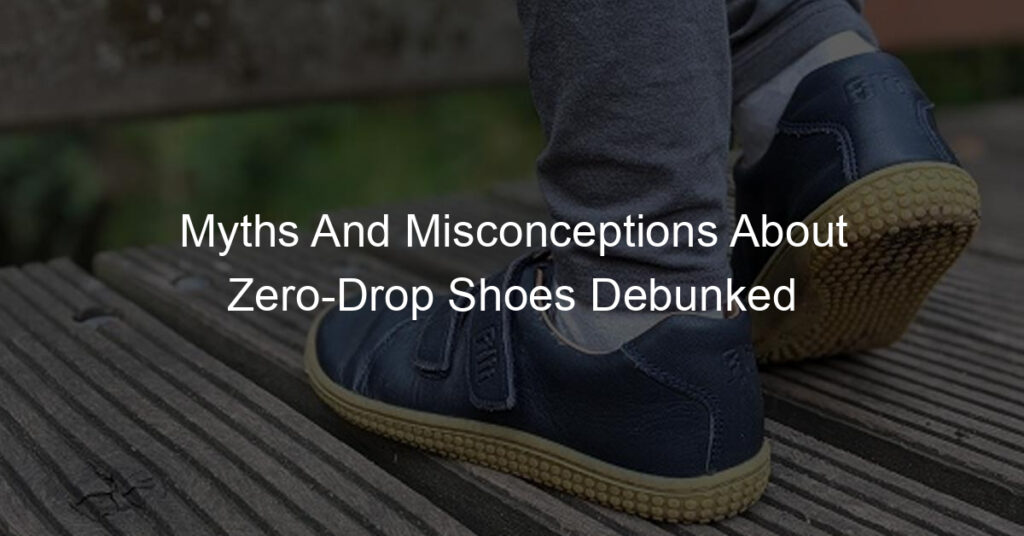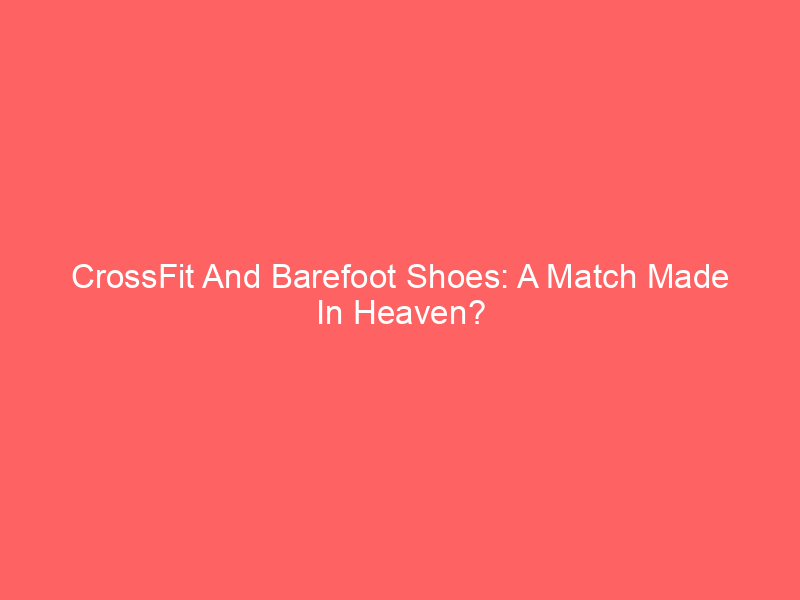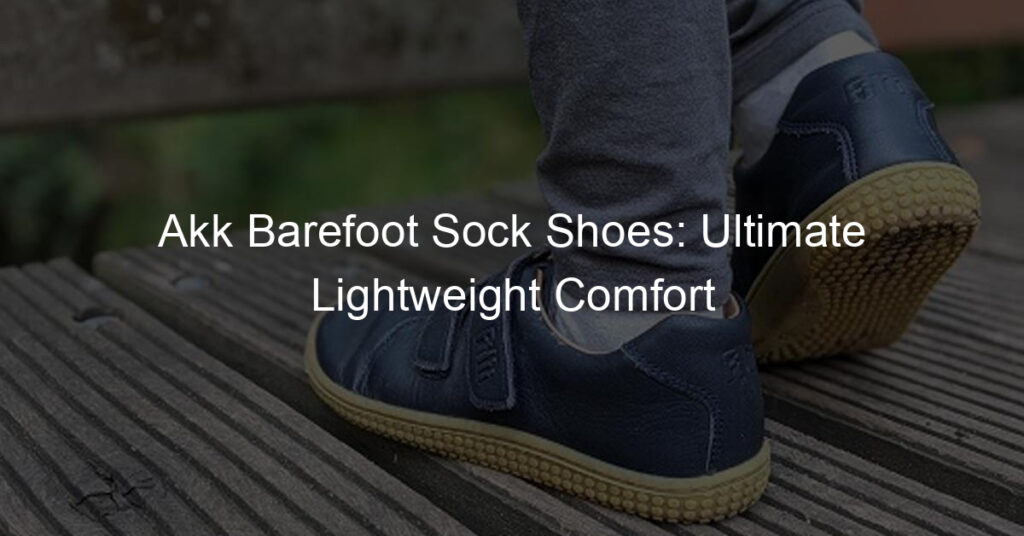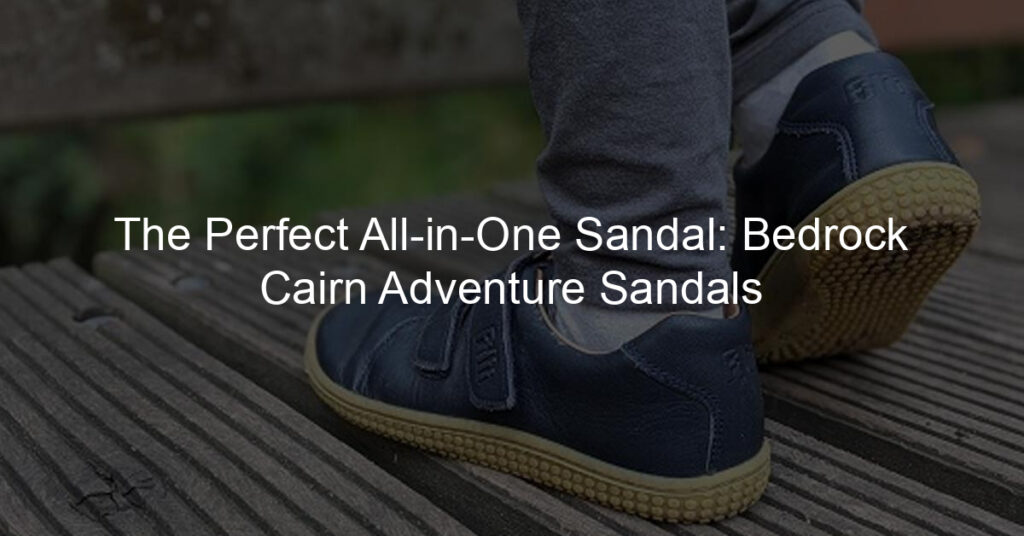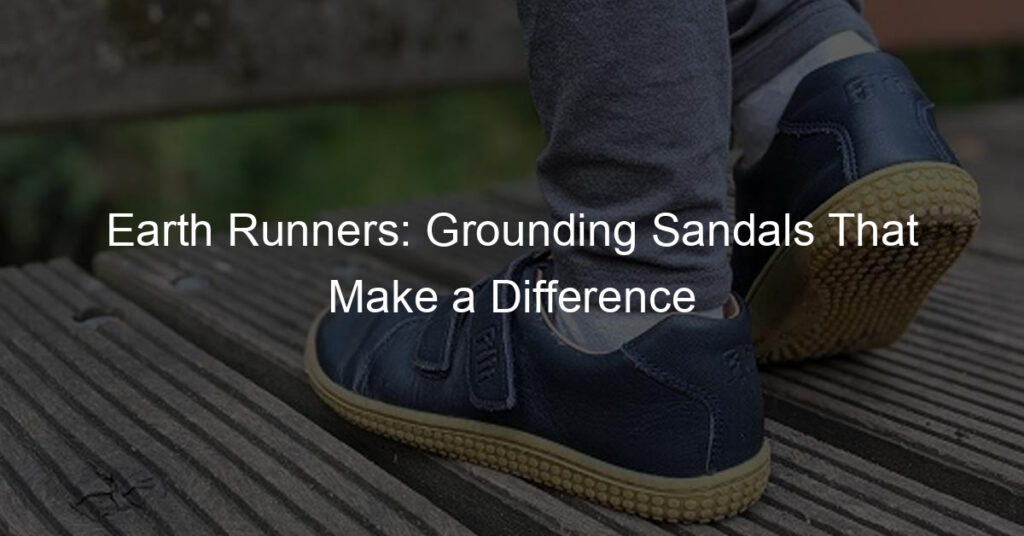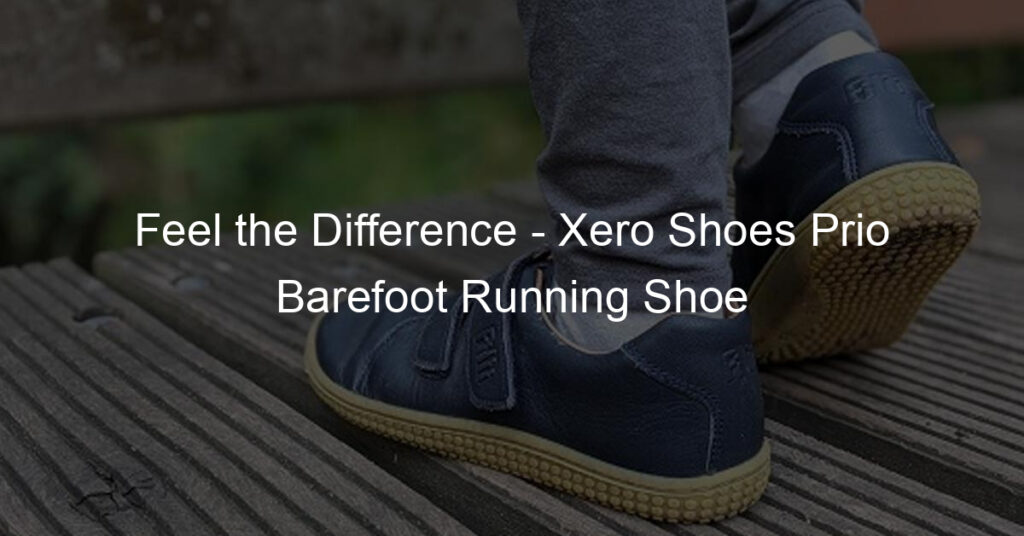Are you curious about zero-drop shoes, but confused by conflicting information surrounding them? Worry no more, as we’re here to cut through the noise and debunk some common myths and misconceptions about these minimalist running shoes.
Whether you’re an avid runner or simply looking for a new pair of kicks, join us as we unravel the truth behind zero-drop footwear and what it could mean for your comfort, performance, and overall well-being.
Key Takeaways
- Zero-drop shoes have no difference in height between the heel and toe, promoting natural foot movement and reducing the risk of injuries caused by unnatural gait patterns.
- Contrary to popular beliefs, zero-drop shoes are safe, do not cause foot injuries, provide arch support in a natural form, and can benefit various activities such as running, walking, or hiking.
- Investing in high-quality zero-drop shoes with improved natural foot function, correct body alignment, reduced risk of injuries, and increased comfort can greatly impact your performance as a runner.
Understanding Zero-Drop Shoes
Zero-drop shoes are minimalist running shoes that have a level sole and no height difference between the heel and toe, unlike traditional running shoes.
Defining Zero-Drop Shoes And How They Differ From Traditional Shoes
As a shoe enthusiast, I’m always on the lookout for innovations in footwear that promote comfort and better performance. One such innovation is zero-drop shoes, which have made quite a name for themselves among runners and minimalists alike.
In contrast, traditional running shoes often feature an elevated heel to absorb impact during each stride. This design has been widely accepted as a good way to reduce injury rates in runners; however, many professionals argue that it can actually do more harm than good by changing our natural gait patterns or causing other alignment issues.
Zero-drop isn’t synonymous with minimalist footwear – although both emphasize giving your feet freedom within their respective designs – there’s still leeway when it comes to choosing how much cushioning you want in your zero-drop pair.
It’s essential not only for athletes but also walkers who desire comfort combined with improved posture and body alignment benefits.
Debunking Myths And Misconceptions About Zero-Drop Shoes
Don’t believe the myths and misconceptions about zero-drop shoes, including the belief that they are unsafe, cause foot injuries, are only for runners, provide no arch support, and are too expensive; instead, learn the truth about their benefits: improved natural foot function and athletic performance with reduced risk of injuries.
Misconception 1: Zero-Drop Shoes Are Unsafe
One common misconception that I’ve encountered is the belief that zero-drop shoes are unsafe. This couldn’t be further from the truth. The primary concern behind this myth revolves around the idea that these shoes offer less cushioning and support, which might lead to injuries while running or engaging in other physical activities.
In reality, zero-drop footwear encourages better biomechanics by promoting a more natural foot strike and gait cycle than traditional running shoes with elevated heels do.
By leveling out the sole of your shoe from heel to toe, zero-drop shoes allow for improved body alignment and reduced risk of injury due to unnatural compensation patterns often found when wearing standard footwear with artificial arches and thicker soles.
For example, a study conducted by Harvard University revealed that individuals who ran in minimalistic or zero-drop footwear experienced fewer forefoot stress fractures compared to those using traditional running shoes.
Misconception 2: Zero-Drop Shoes Cause Foot Injuries
One common misconception that has surrounded zero-drop shoes is the belief that they cause foot injuries. This myth likely stems from the fact that these shoes have less cushioning compared to traditional running shoes, leading people to assume they offer less protection for the feet.
In reality, making the transition to zero-drop shoes can actually help build stronger muscles and encourage proper running form by promoting a more natural gait. For instance, many runners experience less heel striking while wearing zero-drop footwear – which ultimately can reduce impact forces on joints and lessen injury risks in other areas such as hips or knees.
Although it’s true that changing your running style may initially trigger some discomfort or adjustment pains like sore calves or Achilles tendon stiffness; with time and a gradual introduction to minimalist shoe use, most individuals find their overall foot health improves significantly due to enhanced muscle strength and function.
Misconception 3: Zero-Drop Shoes Are Only For Runners
Contrary to popular belief, zero-drop shoes are not just for runners. While they are a popular choice among the running community, these shoes can be beneficial for various activities such as walking and hiking.
Zero-drop shoes position the feet in their natural state, reducing stress on joints and minimizing the risk of injuries. They also provide better stability and balance, making them suitable for different types of exercise routines.
Misconception 4: Zero-Drop Shoes Provide No Arch Support
One of the biggest myths surrounding zero-drop shoes is that they provide no arch support. While it’s true that most minimalist shoes, including zero-drop options, have limited arch support, this does not mean they provide no support at all.
It’s important to note that everyone’s feet are different and require different levels of support. Some runners may find that they need more cushioning or arch support in their shoes to prevent injury and promote comfort.
However, others may benefit from the increased proprioception (awareness of foot placement) and strengthening effects of wearing minimal or zero-drop shoes.
Misconception 5: Zero-Drop Shoes Are Too Expensive
Another common misconception about zero-drop shoes is that they are too expensive. While it’s true that some high-end brands can be pricey, there are plenty of affordable options available in the market.
Additionally, it’s important to remember that not all traditional running shoes come at a low price point either. Some standard road running shoes can cost just as much or even more than certain minimalist or zero-drop options.
The Truth About Zero-Drop Shoes
Zero-drop shoes offer several benefits, including improved natural foot function, correct body alignment, reduced risk of injuries, increased comfort, and improved athletic performance.
The Benefits Of Zero-Drop Shoes
If you are a runner or looking for comfortable, supportive footwear, zero-drop shoes might be the perfect fit. Here are some benefits of wearing zero-drop shoes:
- Improved natural foot function: Zero-drop shoes allow your feet to move naturally and promote stronger foot muscles.
- Correct body alignment: With a level heel-to-toe height, zero-drop shoes encourage better posture and alignment, reducing stress on joints and muscles.
- Reduced risk of injuries: By promoting a more natural running gait, zero-drop shoes can help reduce the risk of certain injuries such as plantar fasciitis or shin splints.
- Increased comfort: With less padding and cushioning than traditional running shoes, zero-drop shoes allow for a closer connection to the ground and improved sensory feedback.
- Improved athletic performance: The natural foot movement and proper alignment promoted by zero-drop shoes can result in faster running times and improved athletic performance.
So if you’re looking for comfortable, supportive footwear that supports your foot’s natural movement while improving your athletic performance, consider giving zero-drop shoes a try.
Improved Natural Foot Function
As a runner or someone interested in zero-drop shoes, you’re probably aware of the benefits of improved natural foot function. When your feet are allowed to move more naturally, they can strengthen and support themselves as intended.
By opting for zero-drop shoes that mimic barefoot movement, you’ll also be promoting correct body alignment.
Switching to zero-drop shoes allows your feet to feel the ground beneath them in a way that is much more similar to walking around barefoot. This can improve overall stability and balance while reducing impact forces on joints.
Correct Body Alignment
Proper body alignment is essential for a successful and injury-free running experience. Zero-drop shoes can help align your spine, hips, pelvis, and legs in their most natural positions, reducing the strain on your joints and muscles.
The benefits of proper alignment go beyond just injury prevention. Properly aligned runners tend to have smoother transitions from heel to toe with each step, which helps reduce bruising underfoot and overuse injuries like plantar fasciitis.
Additionally, many runners find that they feel more comfortable running with a natural stride when wearing zero-drop shoes compared to traditional cushioned footwear.
Reduced Risk Of Injuries
One of the biggest benefits of wearing zero-drop shoes is a reduced risk of injuries. Traditional running shoes often have high heels and thick cushioning, which can cause problems such as plantar fasciitis, shin splints, and knee pain.
Studies have shown that wearing minimalist or barefoot shoes can reduce injury rates in runners. According to a study from Harvard Medical School, runners who wore traditional running shoes had twice the rate of injury compared to those who ran in minimalist footwear.
Additionally, natural runners with a forefoot or midfoot strike experience less injury and chronic pain than those who heel strike in traditional shoes.
Increased Comfort
Switching to zero-drop shoes can lead to a significant increase in comfort levels for runners. The absence of an elevated heel causes the foot to sit more naturally in the shoe, providing all-around support and reducing pressure points that are common with traditional running shoes.
Many people who make the switch to minimalistic footwear also find that their feet feel less fatigued after exercise. Without excessive cushioning, the muscles in your feet and legs have to work harder to maintain balance and control while running or walking.
While this may sound daunting at first, it can actually translate into increased comfort over time as your body adapts to these new challenges.
Improved Athletic Performance
As a runner, you’re probably always looking for ways to improve your performance. Zero-drop shoes can help you achieve just that. By allowing your feet to function naturally and promoting better physical alignment, these shoes can help you run more efficiently and with less risk of injury.
Many runners report feeling faster and more comfortable in minimalist shoes like zero-drop options. However, it’s important to note that making the switch requires conscious effort and may involve some adjustments to your running form.
Zero-Drop Shoes And Different Activities
As someone who enjoys running, it’s important to know that zero-drop shoes are not just for runners. In fact, they can be an excellent choice for a variety of activities beyond running.
For example, if you enjoy hiking or walking on trails, zero-drop shoes can provide a more natural feel on uneven terrain and help reduce the risk of ankle injuries.
It’s also worth noting that not all zero-drop shoes are created equal; some are specifically designed for certain activities such as running or cross-training while others may be better suited for everyday wear.
When looking for a pair of zero-drop shoes, consider the type of activities you’ll be doing most often and choose accordingly.
How To Choose The Right Zero-Drop Shoes
Consider your foot needs and preferences, look for high-quality materials, check the level of cushioning, ensure proper fit and size, and seek out reviews and recommendations when choosing the right zero-drop shoes.
Understanding Your Foot Needs And Preferences
To choose the right zero-drop shoes, it’s important to understand your foot needs and preferences. Consider factors like arch height, pronation tendencies, and any existing foot conditions or injuries.
For example, if you have flat feet or overpronate, you may benefit from a shoe with more cushioning and support. On the other hand, if you have high arches or supinate, a minimalist shoe with less cushioning could be better for promoting natural foot function.
Looking For High-Quality Materials
When choosing zero-drop shoes, it’s crucial to look for high-quality materials. Cheaper options may be tempting, but investing in a well-made pair of shoes will make all the difference in your running experience.
Look for shoes made from durable and breathable materials like mesh or synthetic fabrics that can withstand the wear and tear of daily use. A solid outsole is also essential to provide enough traction on various surfaces while maintaining good contact with the ground.
High-quality materials not only make your shoes last longer but can also improve performance and reduce injury risk. With proper support and cushioning, runners are less likely to develop foot problems such as plantar fasciitis or bunions caused by inadequate footwear choices.
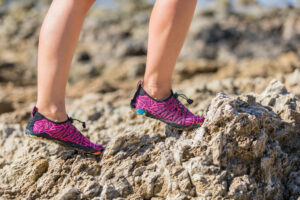
Considering The Level Of Cushioning
When choosing zero-drop shoes, it’s important to consider the level of cushioning. Unlike traditional shoes that often have thick soles and heavy cushioning, zero-drop shoes typically have a thin sole with little or no padding.
One example is how minimal footwear training improved the flexibility and strength of foot muscles in healthy adults. It also helped reduce pressure on the plantar aspect of the first metatarsal bone while running barefoot, as found in another study.
So when considering zero-drop shoes, don’t automatically assume that more cushioning equals better comfort or protection from injury.
Checking The Fit And Size
Getting the right fit and size is crucial when it comes to zero-drop shoes. Unlike traditional shoes, they have a different design that requires proper fitting to ensure optimum performance.
When choosing zero-drop shoes, it’s essential to measure your feet accurately so you can find the perfect fit.
Another important factor to consider when checking for fit is the level of cushioning. Some runners prefer minimal or thin soles while others prefer more cushioned options.
It’s important to select a level of cushioning that works best for your running needs and preferences while keeping in mind how much impact protection you need.
Looking For Reviews And Recommendations
As with any purchase, it’s important to read reviews and seek recommendations before investing in a pair of zero-drop shoes. Reading honest feedback from other runners or shoe enthusiasts can provide valuable insights into the quality, durability, and performance of different brands and styles.
Look for reviews that discuss fit, comfort, support, and overall satisfaction with the shoe.
It’s also helpful to try on multiple pairs in person if possible before making a final decision. Don’t be afraid to walk around the store or take them for a short run to get a feel for how they fit and perform.
Common Misconceptions About Barefoot Shoes
Some common misconceptions about barefoot shoes include the belief that they are dangerous, don’t offer any protection, and are uncomfortable.
Misconception 1: Barefoot Shoes Are Dangerous
One common misconception about barefoot shoes is that they are dangerous to wear, as they offer little cushioning or support. However, studies have shown that this is not the case and that in fact, these types of shoes can have positive effects on foot strength and posture.
While it may take some time for your body to adjust to wearing barefoot shoes, many runners report feeling more comfortable in them after a period of transition. It’s important to listen to your body during this process and start slowly with shorter runs or walks before gradually increasing the distance over time.
Misconception 2: Barefoot Shoes Offer No Protection
Another common myth about barefoot shoes is the belief that they offer no protection for your feet. This couldn’t be further from the truth. While barefoot shoes may not have thick cushioning like traditional running shoes, they are designed to protect your feet in a different way.
Barefoot shoes allow your foot’s natural structures and mechanics to work properly, which can help prevent injuries such as plantar fasciitis and stress fractures.
Additionally, some barefoot shoe brands incorporate thin layers of protective materials into the sole of their footwear, offering added protection from obstacles on the road or trail while still maintaining flexibility and freedom of movement in your foot muscles.
Misconception 3: Barefoot Shoes Are Uncomfortable
Many people assume that barefoot shoes are uncomfortable because they lack the cushioning and support of traditional shoes. However, this is not necessarily true.
In fact, some studies have shown that barefoot shoes can alleviate certain foot conditions and improve posture. Many runners also appreciate how lightweight and flexible these shoes are, allowing for a more natural stride.
Of course, comfort is subjective and it’s important to choose a pair that fits your unique needs and preferences.
Zero-Drop Shoes Vs Barefoot Shoes
Many people confuse zero-drop shoes with barefoot shoes, but there are some significant differences to consider. While both types of shoes have a flat sole and minimal cushioning, barefoot shoes typically have more flexibility and allow for greater movement in the toes.
It’s important to note that zero-drop shoes can provide many of the same benefits as going completely barefoot, such as improved balance and posture, reduced risk of injury, and better running form.
However, they may not be suitable for everyone due to their less stable nature compared to traditional running shoes or even minimalist options.
Tips For Transitioning To Zero-Drop Shoes
When transitioning to zero-drop shoes, start slow and gradually increase usage while choosing the right fit and style; consult with a professional for personalized advice.
Starting Slow And Gradually Increasing Usage
Transitioning to zero-drop shoes can be an exciting yet daunting experience. To avoid potential injuries and foot problems, it is important to start slowly and gradually increase usage over time.
For instance, if you are a runner who is new to zero-drop shoes, consider alternating them with your traditional running shoes for the first few weeks. Start by incorporating 10-15 minutes of running in them once or twice a week and gradually increase that time each week.
Remember: patience is key when transitioning to zero-drop shoes! It may take several weeks or even months before you feel comfortable wearing these types of shoes for prolonged periods without experiencing discomfort or pain.
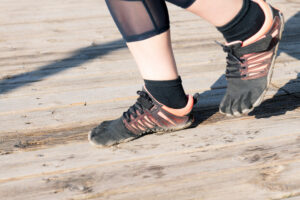
Choosing The Right Style And Fit
When choosing the right style and fit for zero-drop shoes, it’s essential to understand your foot needs and preferences. Look for high-quality materials that offer durability and support while also considering the level of cushioning you need.
It’s important to check the fit and size of the shoe before purchasing, as a good fit can prevent blisters, bunions, or other foot issues.
For example, if you’re transitioning from traditional running shoes to zero-drop shoes, you may want to start with a more padded option to ease into it gradually. Or if you have flat feet, finding a pair with arch support may be crucial.
Consulting with a professional like a podiatrist or shoe specialist can also provide valuable insights into finding the best style and fit for your needs.
Consulting With A Professional
Consulting with a professional is an essential step in transitioning to zero-drop shoes. A podiatrist or running coach can help determine if barefoot-style shoes are suitable for your feet and gait, as well as provide guidance on how to make the transition safely.
They may also recommend exercises or stretches that can aid in strengthening your foot muscles and improving your running form. Another option is visiting a specialty shoe store where the staff is knowledgeable about minimalist footwear and can assist in selecting the right pair based on your foot type, activity level, and preferences.
For example, I consulted with a podiatrist when I first decided to try zero-drop shoes. She examined my feet, analyzed my gait, and recommended several exercises to strengthen my lower legs before taking up any new style of running shoe.
She also suggested starting slowly by wearing them for short periods at first until my body adjusted to the different mechanics of zero-drop shoes compared with traditional running shoes.
The Bottom Line
Zero-drop shoes have been shrouded in myths and misconceptions for far too long. But we hope this article has provided you with the truth about these minimalist running shoes.
Contrary to popular belief, they are not unsafe, do not cause foot injuries, and can benefit runners of all types.
With improved natural foot function, correct body alignment, reduced risk of injuries, increased comfort, and improved athletic performance – zero-drop shoes must be on your shopping list if you are looking for a great pair of casual or running shoes.
Just remember to take your time transitioning into them and find the right fit for your needs.

